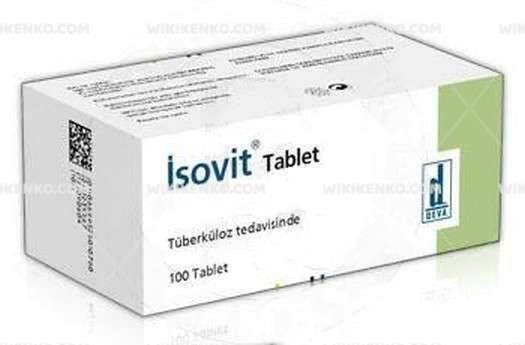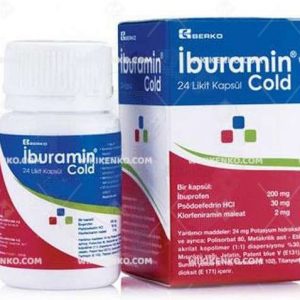Isovit Tablet
Tuberculosis, often referred to as TB, is a prevalent infectious disease that has plagued humanity for centuries. In the ongoing battle against TB, medical science has introduced various treatments, and one such medication is Isovit. This article delves into the specifics of Isovit, its composition, usage, dosage, potential side effects, and the crucial role it plays in the management of tuberculosis.
| Dosage form | |
|---|---|
| Pack size | |
| Potency | Combined |
| Manufacturer | |
| Origin | |
| Generic Name (Ingredient) | Isonicotinic Acid Hydrazide (Isoniazid) 100.0 Mg, Pyridoxine Hydrochloride (Vitamin B6) 25.0 Mg |
Assuming your emergency circumstances for this product, visit Urgent Quotation page. Besides, for any pharmaceutical questions, please ask us in the comments section.
Description
Isovit is a medication carefully formulated to combat tuberculosis. It comprises two active ingredients: Isoniazid and Vitamin B6, scientifically known as Pyridoxine Hydrochloride. This combination is designed to optimize the therapeutic effects while mitigating potential side effects.
Physical Description
Visually, Isovit is a white or off-white tablet. It is odorless and possesses a distinctive round shape. Notably, one side of the tablet features a characteristic notch in the center, while the other side bears a prominent “d” emblem. Isovit is conveniently packaged in carton boxes, each containing 100 tablets. Additionally, a patient instruction leaflet is included to ensure proper administration and guidance.
Indications for Use
The primary purpose of Isovit is the treatment of tuberculosis. However, it is not administered in isolation. Instead, it is typically prescribed alongside other antituberculous drugs, such as rifampicin and pyrazinamide, to form a comprehensive treatment regimen.
Dosage
The appropriate dosage of Isovit hinges on several factors, including the patient’s age, medical condition, and response to treatment. For adults, the standard daily dose is 300 mg, taken orally on an empty stomach. In contrast, for pediatric patients, the dosage is calculated at 5 mg per kilogram of body weight daily, with a maximum daily limit of 300 mg.
Alternatively, intermittent therapy may be employed. This involves administering either 10 mg per kilogram of body weight three times weekly or 15 mg per kilogram of body weight twice weekly, with a maximum dosage of 900 mg.
It’s crucial to underscore that in cases involving patients with hepatic impairment or moderate to severe renal impairment, dosage adjustments may be necessary to ensure safe and effective treatment.
Side Effects
In general, Isovit is well-tolerated at the currently recommended doses. However, it’s noteworthy that individuals who are slow acetylators of Isoniazid may experience a higher incidence of certain adverse effects. Common side effects include elevated blood levels of liver enzymes and numbness in the extremities. On a more serious note, some individuals may experience liver inflammation and acute liver failure. To counter these potential side effects, Pyridoxine, a form of Vitamin B6, may be prescribed as a preventive or therapeutic measure.
The Mechanism
Isovit operates as a powerful ally in the fight against tuberculosis through its two key components. Isoniazid, an antibacterial agent, exerts its influence by inhibiting the synthesis of mycolic acids. These acids are vital components of the bacterial cell wall responsible for tuberculosis. By disrupting their formation, Isoniazid weakens the cell wall, ultimately leading to the bacteria’s demise. Simultaneously, Vitamin B6, or Pyridoxine, is included to prevent or alleviate peripheral neuropathy, a common side effect associated with Isoniazid.
Diagnosing Tuberculosis
Tuberculosis diagnosis is a meticulous process that combines physical examination, medical history analysis, and laboratory tests. Several common tests are employed in the diagnosis of TB, including the tuberculin skin test, blood tests, chest X-rays, and sputum tests. These tests help healthcare professionals accurately identify the presence of TB and determine the appropriate course of action for each patient.
Conclusion
In conclusion, Isovit stands as a vital component in the arsenal against tuberculosis, effectively combating this infectious disease. Its precise composition, cautious administration, and consideration of potential side effects contribute to its role as a beacon of hope for those afflicted by TB. With ongoing research and medical advancements, Isovit continues to play a pivotal role in the global effort to eradicate this formidable health threat.
Use the form below to report an error
Please answer the questions as thoroughly and accurately as possible. Your answers will help us better understand what kind of mistakes happen, why and where they happen, and in the end the purpose is to build a better archive to guide researchers and professionals around the world.
The information on this page is not intended to be a substitute for professional medical advice, diagnosis, or treatment. always seek the advice for your physician or another qualified health provider with any questions you may have regarding a medical condition. Always remember to
- Ask your own doctor for medical advice.
- Names, brands, and dosage may differ between countries.
- When not feeling well, or experiencing side effects always contact your own doctor.
Cyberchondria
The truth is that when we’re sick, or worried about getting sick, the internet won’t help.
According to Wikipedia, cyberchondria is a mental disorder consisting in the desire to independently make a diagnosis based on the symptoms of diseases described on Internet sites.
Why you can't look for symptoms on the Internet
If diagnoses could be made simply from a textbook or an article on a website, we would all be doctors and treat ourselves. Nothing can replace the experience and knowledge of specially trained people. As in any field, in medicine there are unscrupulous specialists, differences of opinion, inaccurate diagnoses and incorrect test results.





Reviews
There are no reviews yet.